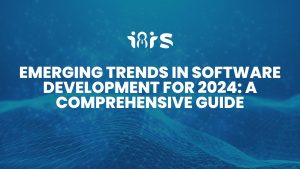Innovative software development is a dynamic field that encompasses the creation, testing, and deployment of software solutions characterized by new ideas, methodologies, or technologies. This form of development is often motivated by the desire to address novel or existing challenges more efficiently, enhance user experiences, foster efficiency, or capitalize on the latest technological advances. Below are pivotal elements and emerging trends within this realm:
Agile and DevOps Practices:
These methodologies emphasize collaborative, iterative development where solutions and requirements mature through the synergies of cross-functional teams. DevOps merges development with operations to enhance productivity and collaboration by automating workflows, and infrastructure and consistently evaluating app performance.
Cloud-Native Technology:
This approach involves crafting applications specifically for cloud environments, utilizing cloud computing benefits. It employs microservices architectures, containerization (like Docker), and orchestration tools (such as Kubernetes) to develop applications that are both scalable and resilient.
Artificial Intelligence (AI) and Machine Learning (ML):
Integrating AI and ML into software development allows for the creation of smart applications capable of analyzing data, learning, and making informed decisions or predictions, ranging from chatbots to sophisticated automation and data analysis tools.
Blockchain Innovations:
The development of decentralized applications (DApps) and smart contracts on blockchain platforms enhances security, transparency, and trust across various sectors, including finance and supply chain management.
Internet of Things (IoT):
IoT software development enables devices to connect, interact, and share data over the internet, necessitating software for sensors, actuators, and the platforms that manage these devices.
Cybersecurity Advances:
Innovative cybersecurity methods are essential as threats evolve, involving the development of advanced encryption, security protocols, and software for real-time threat detection and response.
User Experience (UX) and User Interface (UI) Design:
Prioritizing UX and UI by employing innovative solutions like voice user interfaces, augmented reality (AR), and virtual reality (VR) to craft immersive and intuitive user applications.
Continuous Integration/Continuous Deployment (CI/CD):
Automating integration and deployment processes enables frequent, automatic testing and deployment of code changes, resulting in higher-quality software and quicker release times.
Open Source Contributions:
Engaging with and contributing to open-source projects encourages innovation through global collaboration, providing a foundation for the rapid development of new technologies and solutions.
Sustainable Software Development:
This focuses on creating software with minimal environmental impact, promoting energy efficiency, and sustainable resource use, reflecting the increasing importance of digital technology’s role in society.
Innovation software development transcends the mere adoption of novel technologies; it involves reimagining the development and delivery processes to better meet evolving user demands, enhance efficiency, and creatively leverage technological progress.





